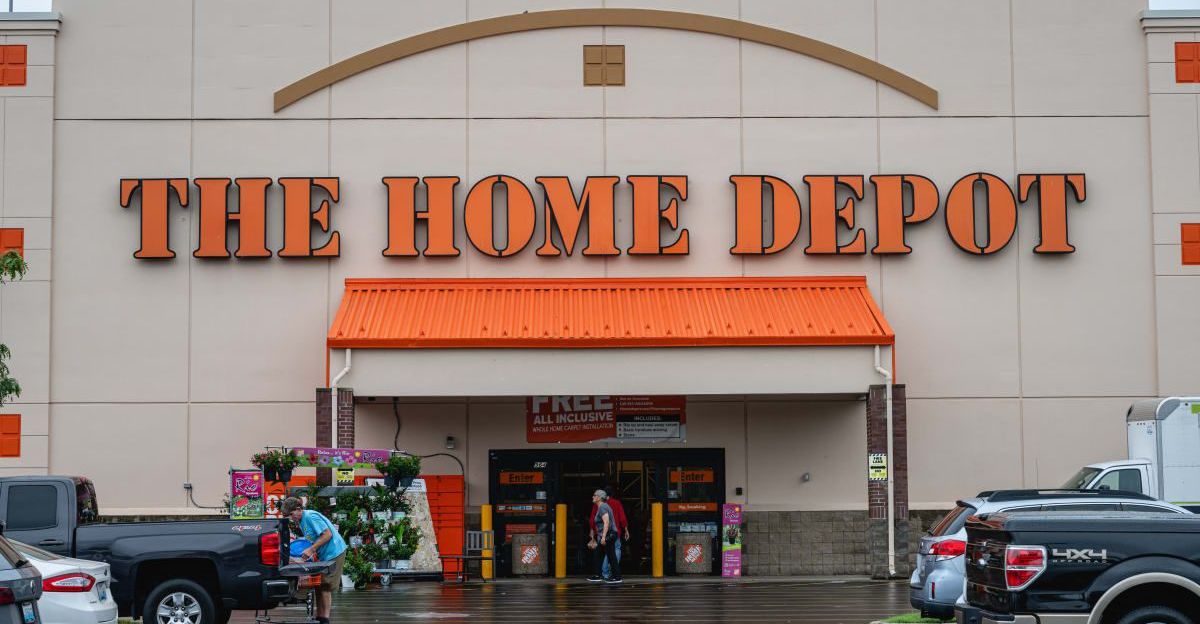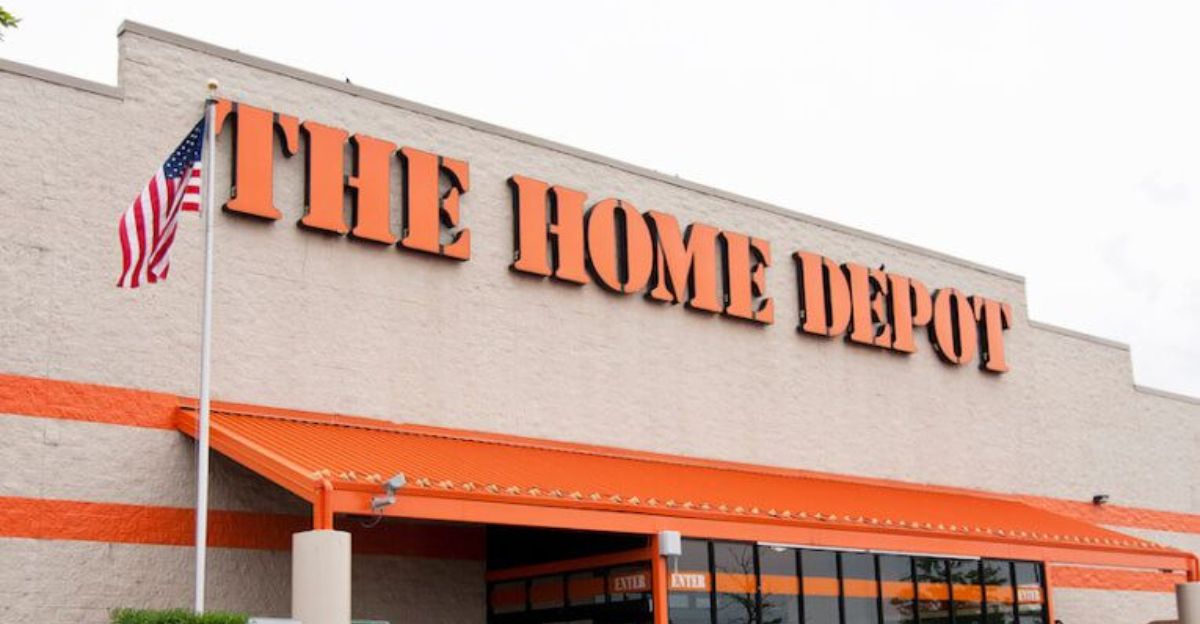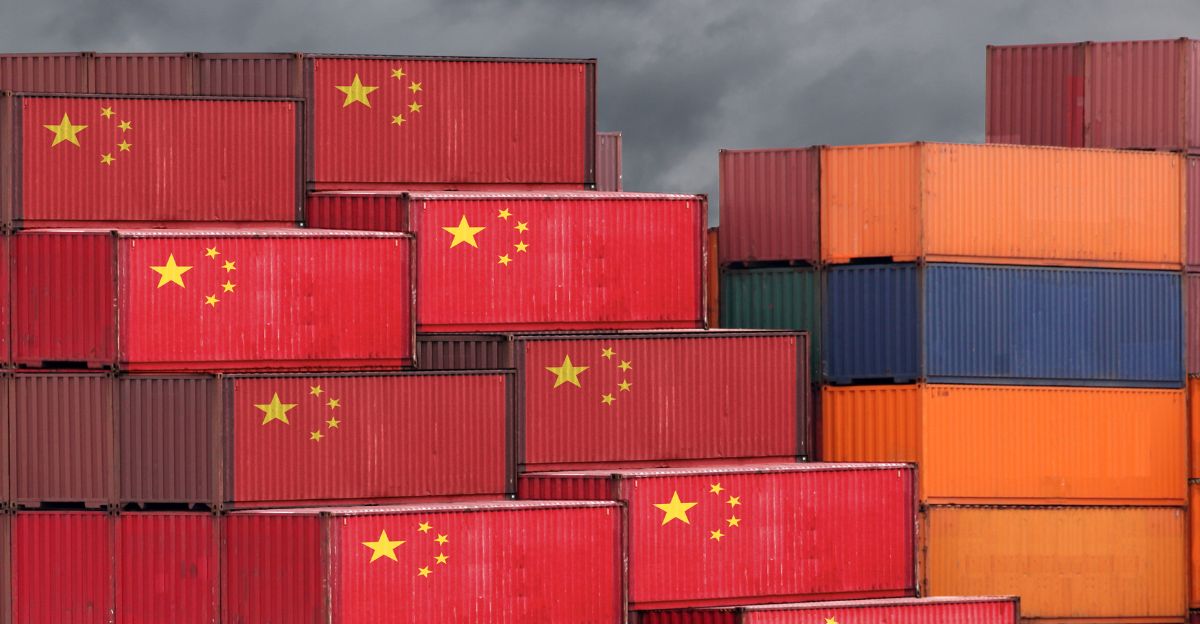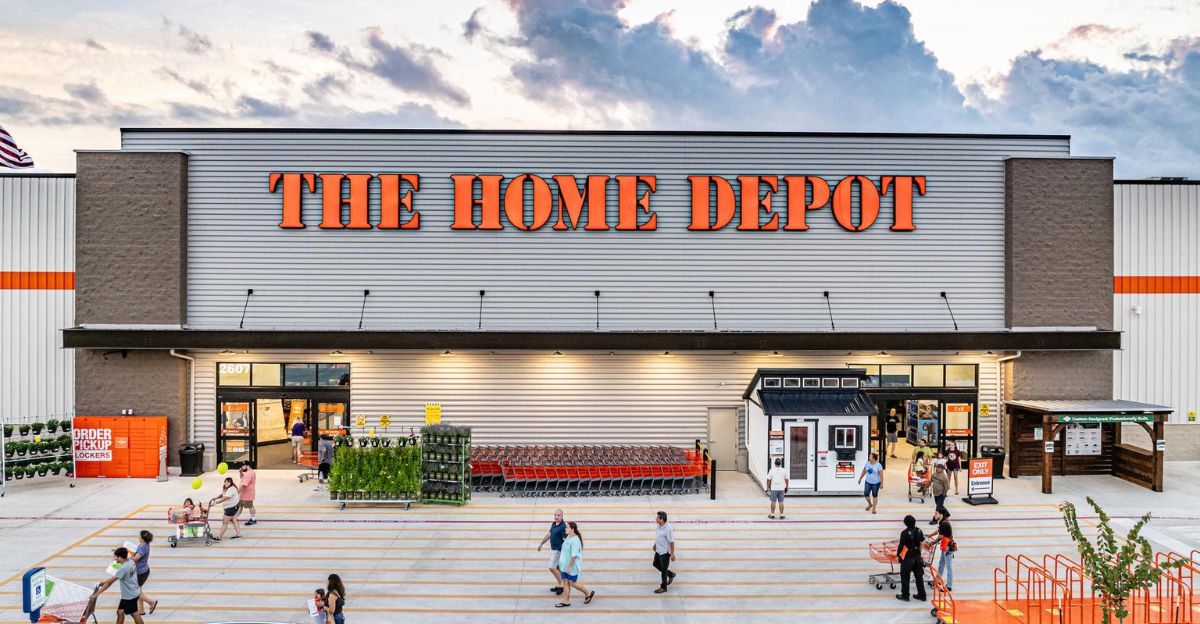
As President Trump’s new tariffs kick in (roughly 10% on most imports, 30% on Chinese goods), U.S. retailers are bracing for sticker shock.
Walmart, the country’s largest retailer, has warned shoppers to expect higher prices by early summer.
Home Depot, by contrast, is playing a different hand. Its executives say a U.S.-heavy supply chain lets it absorb most added costs, pledging to hold prices flat for customers.
Investors are watching which strategy wins in this high-stakes tariff showdown.
Rising Stakes

The new duties hit already-slim margins. With a 10% baseline tariff and a 30% China surcharge in place, analysts warn that each point of tariff could shave hundreds of millions off big-box profits.
Retailers now face a brutal choice: swallow the hit or shift it to consumers.
In a year of sluggish growth, that decision – protecting margins versus protecting sales – may determine which chains gain or lose shoppers.
Backstory

Home Depot has navigated trade wars before. In 2018, it accelerated domestic sourcing and even won exemptions on some lumber duties.
It also invested heavily in its operations – including a $1.2 billion upgrade of its supply-chain automation.
That earlier groundwork is paying off.
The retailer’s lean, tech-driven network and strategic sourcing (built during prior tariff fights) now form the backbone of its playbook for today’s tariff challenges.
Pressure Mounts

Other headwinds are compounding the problem.
Mortgage rates near 7% have dampened demand for big remodels, even as a national housing shortage of about 4.7 million homes keeps prices high.
Builders say rising costs for materials like lumber and copper are being “priced in,” straining budgets further. Many homeowners are instead focusing on small fixes.
The result: retailers must fight for every small-ticket sale and for contractor loyalty in a tight market.
Big Reveal

On May 20, Home Depot reported surprisingly strong Q1 results – $39.86 billion in sales (about +9% YoY) – and made a bold pledge: no broad price hikes.
Billy Bastek told analysts they would “maintain pricing across our portfolio” to absorb the tariffs. But here’s where it gets interesting.
Zacks analyst Sheraz Mian cautions: “If [Home Depot] is committing to pass none of the incremental impact on to end consumers, then they will have to absorb the remaining tariff costs internally, which would hit margins”. Indeed, Home Depot’s margins ticked down under the strain.
Regional Ripples

In some local markets, the strategy is already paying off. Home Depot executives note “steady customer spending on smaller projects” this spring – think fresh mulch or minor repairs, not kitchen overhauls.
Contractors in the Sunbelt report busier books since they can lock in quotes before rivals raise prices.
Even product lead times have shortened: consistent Home Depot demand and domestic sourcing have, in some cases, cut delivery waits (for example, vinyl siding) by a couple of weeks.
These regional ripples hint at where Home Depot may capture share.
Human Lens

Customers and suppliers provide a ground-level view of this clash. One Florida handyman says he’s now steering clients to Home Depot for price-sensitive tools: “My quotes stay flat, so I win jobs,” he notes.
On the supplier side, tensions show.
A China-based lighting vendor reports that margins “evaporated overnight” under the new duties, adding that rebuilding capacity in Mexico to restore profitability will take nearly a year.
These firsthand accounts underline a harsh reality: tariffs simply shift costs through the system, with winners and losers at every level.
Competitive Heat

Walmart is moving in the opposite direction from Home Depot. It began rolling out 3–7% price hikes on everyday goods by June to shoulder some of the tariff burden.
Lowe’s, meanwhile, insists it will remain “price competitive” to hold customers, even though its CFO left open the possibility of targeted increases.
The net effect is clear: big-box market share is now fluid.
Price-sensitive shoppers are scanning every tag, so retailers that keep more items affordable (and in stock) may pull ahead in the coming months.
Macro View

Tariffs aren’t the only drag on business. Soaring material costs have builders on edge: for instance, softwood lumber prices are roughly 18% higher than at the start of the year (industry sources). Many potential buyers are priced out as a result.
Coupled with nearly 4.7 million fewer homes than needed, and high mortgage rates, retail demand seems to be tilting toward maintenance and quick fixes, not major remodels.
This means consumer spending may flow more into items like paint, tools, and small appliances than into full-scale home renovations.
Mini Pivot

Home Depot’s second surprise is how far it has diversified its supply network. Today, more than half of its inventory is U.S.-sourced, and executives vow that within 12 months, no single foreign country will account for more than 10% of any product category.
In a post-earnings call, merchandising chief Billy Bastek summed it up: “We don’t see broad-based price increases for our customers at all going forward”.
This “China-plus-many” strategy – spreading production across Asia, Latin America and beyond – helps Home Depot dodge the worst of any one tariff spike.
Supplier Strain

The tariff squeeze is pushing Home Depot’s suppliers to the limit. Executives admit that if duties drive costs too high, some SKUs could simply disappear.
Home Depot now embeds strict “relocation” clauses in vendor contracts: make goods outside high-tariff regions or lose the listing.
Dozens of China-based manufacturers are scrambling. One factory manager grimly observed that his margins “evaporated overnight.”
Rebuilding plants in Mexico or Vietnam to skirt the 30% China duty will take months.
Someone in the supply chain is paying — and Home Depot is determined not to be that someone.
Leadership Chord

Home Depot’s leaders emphasize data and discipline. CFO Richard McPhail has dismissed tariffs as “just another cost in the equation,” pointing to the company’s long-running cost-finance team for real-time pricing analytics.
That 15-year-old internal “war room” lets Home Depot tweak prices or promotions faster than rivals slowed by legacy systems.
It means management can hold prices stable longer and then pivot quickly if costs spike.
this focus on analytics and cost control has become a competitive weapon, giving Home Depot an agility competitors lack.
Comeback Plan

Instead of cutting back, Home Depot is doubling down on pro contractors. It announced four new regional distribution hubs dedicated to professional customers.
These Pro centers will stock the bulkiest materials (lumber, roofing, etc.) and support flatbed deliveries.
The chain also expanded its trade-credit lines and online tools for pros.
Early pilots of this approach have yielded faster service: Home Depot says deliveries for large, contractor-sized orders are now about 20% quicker. By shortening drop-off times and increasing pro support, it aims to give builders both a service edge and a price edge.
Analyst Take

Analysts point out there’s no free lunch. Home Depot’s “portfolio” approach still means some individual prices will rise, and the tariff drag shows up in a modest EPS hit (Morningstar noted about a 3% dip for 2025).
But analysts also argue the share gains could outweigh that by 2026. In other words, short-term profit sacrifice by absorbing costs might pay off with volume growth later.
With many peers cutting guidance, the key question is whether Home Depot’s aggressive market-share strategy can offset its near-term margin pain.
Looking Ahead

Everything now hinges on the July 1 deadline for trade talks with China. If negotiations collapse and Trump lets the current 30% China duty snap back to prior highs (potentially over 100%), even Home Depot may have to selectively raise prices or cut more products from its assortment.
Investors are clearly nervous: Home Depot’s stock is trading on volatility, not certainty.
The market has priced in a wide range of outcomes – from a sweetened trade deal to a full tariff escalation – any of which will ripple through Home Depot’s P&L.
Political Undercurrent

Tariffs have become political theater. After Walmart warned of price hikes, President Trump publicly scolded the retailer – tweeting “Between Walmart and China… they should… ‘EAT THE TARIFFS’” instead of passing costs to customers.
By contrast, he praised Home Depot for its stance, framing it as patriotic.
Policy analysts suggest this praise may translate into regulatory goodwill or heightened expectations of loyalty.
Either way, Home Depot now carries the label of a model tariff-survivor in the public discourse.
Global Shakeout

The tariff battle is already reshaping supply chains worldwide. Many Chinese tool and hardware suppliers are setting up new plants in Vietnam, Mexico and beyond so they can continue serving U.S. retailers tariff-free.
For example, Shenzhen-based BrightForge announced a $60 million factory in Baja California explicitly to bypass U.S. duties.
These moves – driven by retailer demand – could permanently redraw the map of consumer-goods manufacturing.
Global production is shifting rapidly so that Home Depot (and others) can keep shelves stocked.
Legal Angle

The legal battle over these tariffs is heating up, too. At the U.S. Court of International Trade, dozens of lawsuits are challenging the administration’s new duties across product lines (from cabinetry to electronics).
A successful court ruling could immediately roll back duties on certain items – effectively refunding importers and altering Home Depot’s cost base overnight.
Home Depot and its peers are clearly watching these cases: any decision or last-minute trade deal could ripple through their cost calculations.
The retailer is staying agile, ready to move if the legal playing field shifts.
Cultural Shift

Meanwhile, Home Depot has leaned into longer-term investments in people. Its Path to Pro training program has now certified over 44,000 tradespeople, helping address skilled labor shortages.
By positioning itself as a partner in the trades – offering training, certification and career support – Home Depot strengthens loyalty among contractors. In a labor-starved market, workers who are trained and supported tend to keep buying from Home Depot as they build their careers.
The result is that Home Depot isn’t just a supplier of goods – it has become a community partner to the trades.
Bigger Picture

Home Depot’s tariff-survival story shows that resilience isn’t about dodging costs; it’s about re-engineering your supply chain, culture and customer base.
Rather than a simple price war, the chain is blending data-driven pricing, diversified sourcing and service innovation.
As trade winds continue to shift unpredictably, Home Depot’s playbook – diversify imports (the “China+many” approach), lean on pro customers, and infuse purpose (training trades) – could become a model for companies navigating an era where policy, pricing and purpose are tightly intertwined.